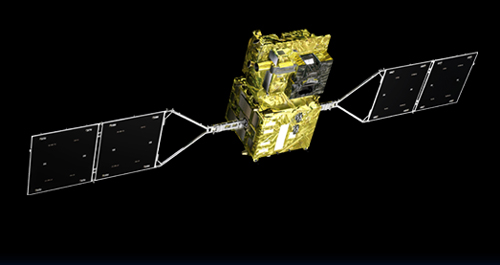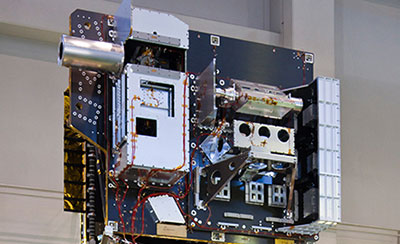News
Launch of Shikisai for Accurate Climate Change Forecast Updated in February 2018
Japan Aerospace Exploration Agency (JAXA) and Mitsubishi Heavy Industries (MHI) announced that they will launch the observation satellite Shikisai and Tsubame. On December 23, they will be sent to outer space on the H2A rocket from JAXA’s Tanegashima Space Center in Kagoshima prefecture (Kyushu region). For accurate climate change prediction in the future, Shikisai will try to examine the influence of fine particles in the atmosphere. The scheduled launch time is 10:26 am on Dec. 23., but if any concerns are found after the final safety check, the launch will be postponed.
The height of Shikisai is about 5 meters, with length and width of about 2.5 meters each. When its solar cell paddle is spread out, the total horizontal length would be about 17 meters. It weighs about 2 tons. It is equipped with an optical sensor called SGLI (second generation global imager) which can observe 19 kinds of wavelengths. Besides capturing fine particles in the atmosphere reflecting sunlight, it can collect various data like sea surface temperature, cloud distribution and vegetation. It can also observe the entire surface of the earth in a few days while orbiting around the earth at an altitude of 800 kilometers.
The test satellite Tsubame* will orbit at a lower altitude than Shikisai, to see whether it can function without trouble at an altitude of 200-300 kilometers, a zone where satellites can be susceptible to atmospheric resistance during observation missions. If it can fly at an even lower altitude, it will enable us to observe the earth’s surface from a closer range. *Tsubame means swallow, the bird in Japanese.
The name for this climate observation satellite, “Shikisai” was chosen from nearly 13,000 names sent in from the public. Shikisai literally means color or hue in Japanese. The reason for its selection is because “Plant life, ocean, snow/ice and various other targets seen through the satellite reflect colorful images. They summarize the very characteristic of this climate observation satellite which can capture nature at multiple wavelengths with its optical radiometer.”
JAXA News (English)
https://global.jaxa.jp/news/2017/#news11217GCOM site (English)
https://suzaku.eorc.jaxa.jp/GCOM_C/monitor/gallery/20180112.html
Photos courtesy of Japan Science and Technology Agency

Photos courtesy of Japan Science and Technology Agency







